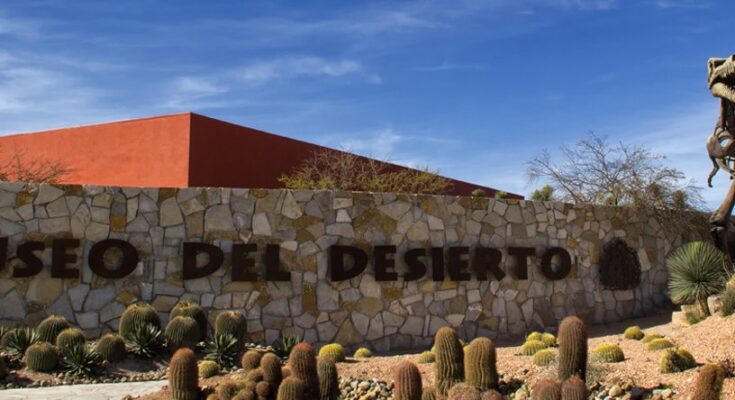Saltillo is the capital city of the State of Coahuila and is located 869 km from Mexico City by way of Federal Highways 57 and 45. It is a old colonial city, founded in 1575. Its name is descriptive of a small waterfall that comes from a spring at the location where the city was first founded.
Table of Contents
Saltillo Mexico
Saltillo has been received various nicknames throughout the years. One is “Las Atenas de Mexico” (the Athens of Mexico), due to the great thinkers that it has given to the country and because of the important cultural and educational centers here. Others are “La Ciudad del Clima Ideal” (The City of Perfect Climate), because of the wonderful weather the city has almost year round and “La Tierra del Sarape” (theLand of the Serape), since the Serape, one of the most representative and well-known articles of clothing from Mexico, originated here.
The industrial agriculture and commercial activities, as well as its many tourist attractions, have made Saltillo into one of the best places to visit in north Mexico. The architectural heritage of Saltillo is reflected in the large number of buildings constructed of pink quarry and limestone.
Saltillo’s main attractions
Like many regions of Mexico, the city of Saltillo has a large number of attractions that dazzle locals and visitors alike, a city where you can’t miss the churches, temples, casinos, schools, hotels, landscapes and nearby towns.
Of course, it has a large number of more than 100 attractions, but here we will only list the most important ones. So let’s get started.
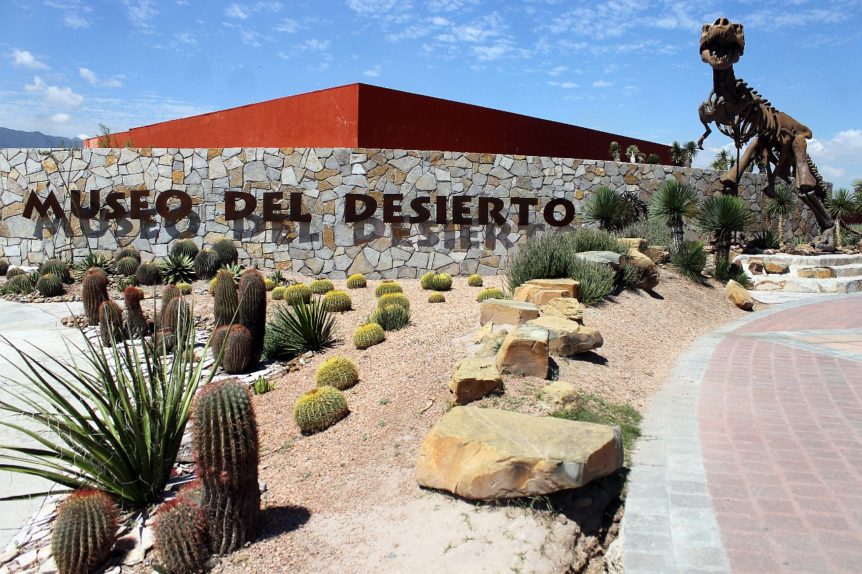
The Saltillo Cathedral
Which is one of the most beautiful baroque buildings in the country. A true architectural jewel dedicated to the apostle Santiago el Mayor. Its construction, as a church, began in 1945, but was later denominated as the Cathedral of Saltillo in 1891.
Faith, religious life and art have been present in this architectural jewel for more than centuries. The Spanish symbolism of burying three gold coins as an offering in the construction of buildings was the basis of what today adorns its ceilings and walls. A religious, cross-shaped architecture that manifests its beauty on its facade; it is a perfect union between God and man. Magnificent strokes of oil on canvas, meticulous sculptures in each corner.
Elements consciously worked in all of its art and decoration are observed along the length and width of the structure. Devotion and fervor are brought together in the Stations of the Cross, from Belgium; the exquisite work of the antique pulpit; splendid paintings from the Viceroyalty and Colonial Periods like La Sagrada Familia and La Virgen de Guadalupe y sus apariciones, that reflect the artistic skill of don Jose de Alcibar. Baroque altarpieces and a multitude of Salomonic columns topped b the Conch of the Apostle Santiago adorn the building.
San Juan Nepomuceno Temple
This neoclassical Jesuit building from the nineteenth century preservers in its interiors oil paintings by Father Gonzalo Carrasco, evangelical sculptures and a mural of the life of San Juan.
Nueva Tlaxacala Plaza
Symbolizing the mixture of Tlaxcalteca and Spanish culture which gave from to what is now Saltillo, this beautiful esplanade is located behind the Government Palace.
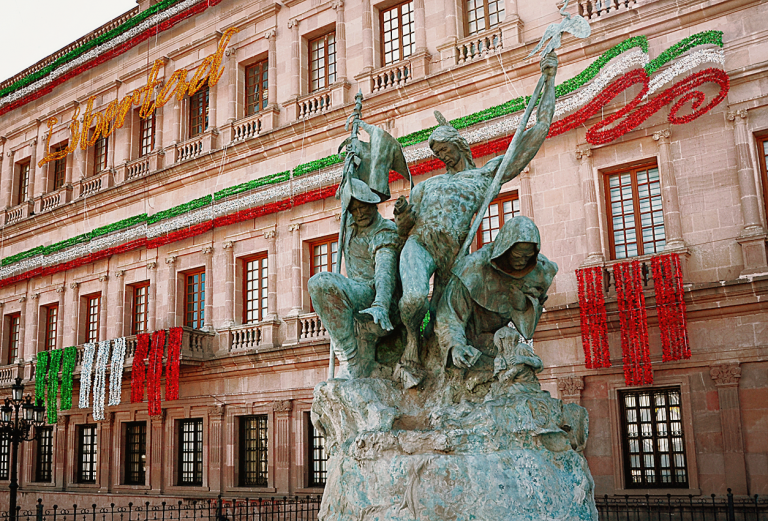
El Casino de Saltillo
Built in Greco-Roman style with neo-classical details, this beautiful building, originally named Casino Militar, was built in 1870. After surviving the battles of the revolution, it now acts as a meeting place for the Saltillan society.
Venustiano Caranza Museum
Located inside the Government Palace, the two-story museum displays a collection of photography, furniture, documents, objects and a video of the political lives of famous figures.
Teatro Garcia Carrillo Cultural Center
Built from stone in the first decade of the twentieth century, it is named in honor of the former governor Antonio Garcia Carrillo. Now it is a space where local artists demonstrate their quality works.
Coahila Institute of Culture (ICOCULT)
This building was once and old mansion. It now houses a cafe, library, and exhibition halls where temporary exhibits of paintings, sculptures, drawings and other art forms are held.
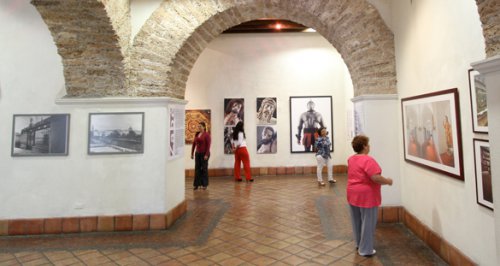
The Government Palace
Where there are some murals depicting the political history of the State, painted by Salvador Tarazona.
Juarez Market
Picturesque shopping center where one can buy anything from the most typical candy to traditional craftwork such as shawls, suits and hats.
San Esteban Temple
This church has great historic value. It was built in 1592 when the town of San Estebas de la Nueva Tlaxcala, inhabited by the Tlaxcaltecans, was founded. Later, in 1847, during the Battle of Angostura, it was used as a hospital.
The Plaza de Armas (the Main Square)
Has a fountain made of cast bronze nymphs. An emblematic point of reference where the history, art and faith of this area come together, making it a must see during your visit here.
The Zaragoza Park
Have a monument honoring Ignacio Zaragoza, Venustiano Carranza, and Manuel Acuña, is the main green area of Saltillo. It is an important park where poplars and ash trees are surrounded by paths of paving stones, creating an ideal atmosphere for relaxation and amusement.
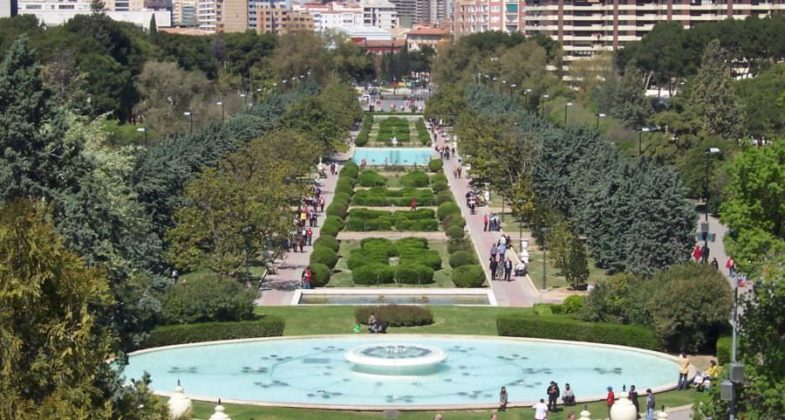
El Museo de las Aves de Mexico (Bird Museum)
Inaugurated in 1993, this modem cultural space enriches and symbolizes our country and shows us, in spacious rooms, the value, diversity and spectacle of the universe of birds.
Plaza Acuña
An unmistakable place of amusement surrounded by gardens with palm trees. An sculpture by Jesus Contreras stands out in its centre honoring the memory of the Saltillan poet, Manuel Acuña.
Ojo de Agua Church
The construction of this modest church began in 1894 by local townspeople who were motivated by their devotion to the blessed Christ and the waterfall from which Saltillo received its name. Construction was completed in 1917.
Vito Alessio Robles Cultural Center
This center preserves a large and valuable book collection, as well as personal objects of this renowned historian. The murals in the central patio stand out as well as the filmed works of Elena Huerta. In addition, there are temporary exhibits featuring sculptures paintings and photography.
Purcell House / Cultural Center Saltillo XXI Century
With a Tudor entranceway, this beautiful work of architecture was done in a classic Irish style at the wishes of its owner, Guillermo Purcell, who was originally from Ireland. Today, it serves as a cultural center.
Ruben Herrera Museum
This museum exhibits the exemplary works of art of this Zacatecan master. His drawings and paintings are surrounded by the neocolonial style of this seventeenth century mansion.
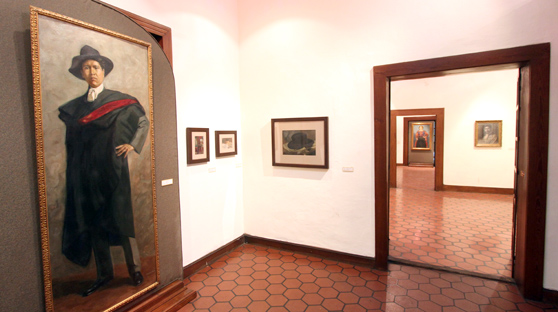
San Francisco Temple
An example of the spiritual fervor of its inhabitants, this church dates back to the nineteenth century and gives life to the San Francisco plaza/garden where a sculpture of the well-known Saltillan bullfighter, Fermin Espinosa “Armillita Chico” is located.
Shawl Factory
This mansion remains an authentic fountain of handcrafted originality where, inside, we can bear witness to how imagination gives form to the most creative garment of this state.
Plaza Mexico Scenic
Lookout A point from where the city, in all its splendor, can be admired and in 1847 was witness to the staging of the Beatle of Angustura by U.S. troops.
Santa Anita Barrio
This traditional and historical central neighborhood boasts its picturesque spaces which are now more attractive than ever. The small streets, Miraflores and Manuel Moreno, among others, have been renovated to restore their colonial ambiance.
Zaragoza Alameda
This perfect natural space for relaxing under the abundant protection of ash and poplar trees offers us places such as the Lake of the Republic, the State Public Library and historic vision inspiring sculptures.
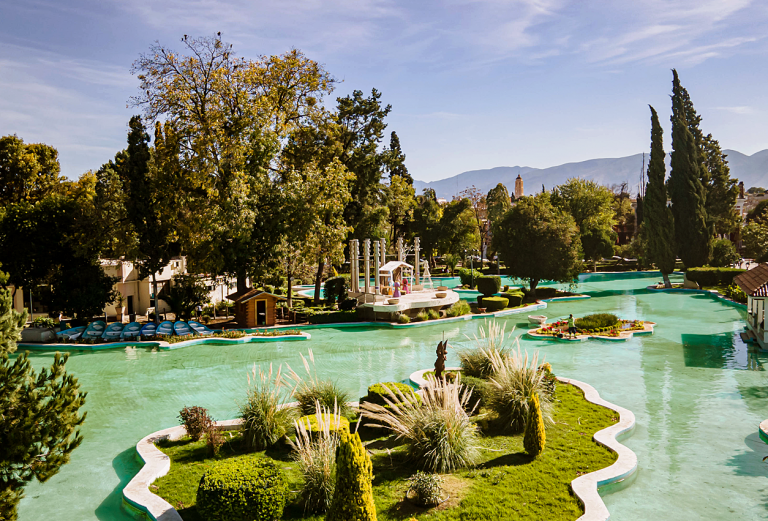
The Normal School
Modest building from the end of the nineteenth century where, behind its pink stone walls, illustrious men have come forth to contribute to the cultural image of the city.
The Commercial Academy and the Fernando Soler
Theater built in the XIX century in memory of the actor who was born in this capital, this refuge of cultural expressions boasts a group of Greek symbols crowned with a frieze of the Goddess Ceres on its facade.
Nuestra Señora de Guadalupe Sanctuary
Precious gothic style religious work where the history of the nineteenth century endures in its stone architecture.
Justice Palace
This recently constructed building has a somber facade of stone and ionic column a characteristic seal of the city.
Central Public Library
This cultural building with a simple stone entranceway and ornamentation decorating its upper portion houses numerous reference materials.
Municipal Presidency Walkway gardens in front of the building welcomes visitors and highlights a mural by Gonzalez Camarena. This building is a symbol of the local governmental bodies.
Congressional Palace
Maintaining an architectural style that harmonizes with the adjacent buildings, assembly meetings have taken place under its roof for more than two decades.
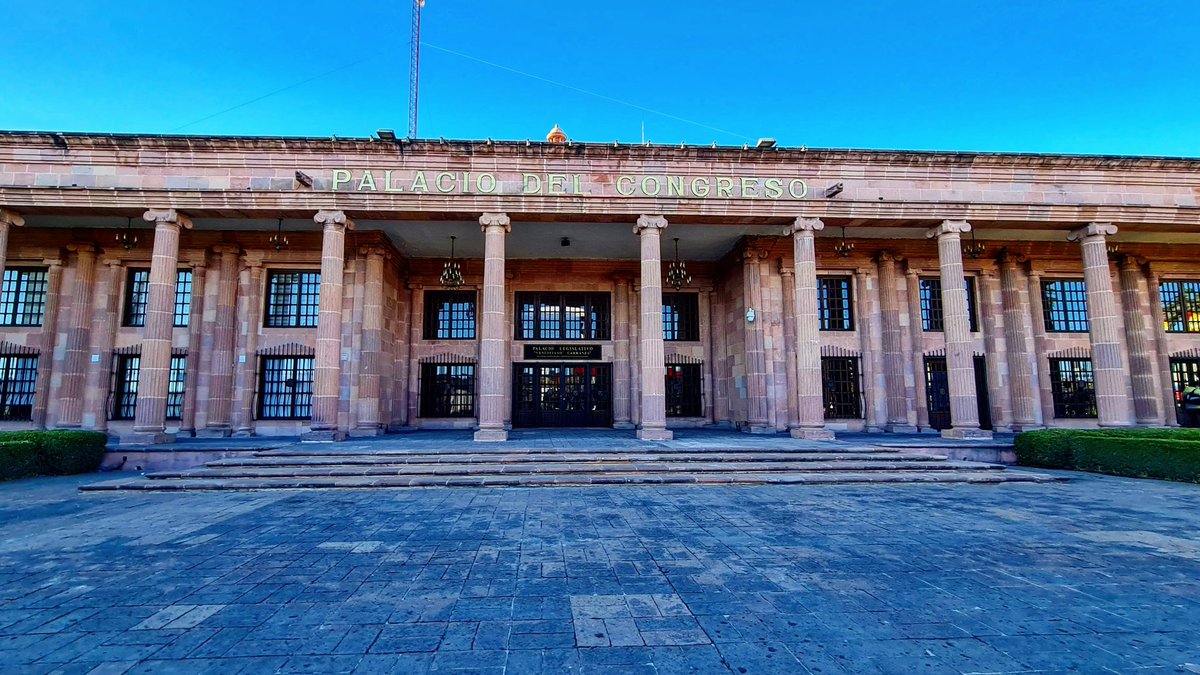
Plaza of the Twin Cities
Pleasing space integrated to highlight the fraternal bond that unites Saltillo with the city of Austin, Texas, among others. A sculpture of the Saltillan poet Manuel Acuña stands out in the plaza.
Old Train Depot
Outlined with shapes similar to those of a factory, this vestige from 1883 was once witness to the railroad line that connected the city of Saltillo with Mexico City.
New Legislative Palace
This fairly new building, with its powerful image in accord with its function, concludes the tour of this area.
Saltillo Technological Institute
Since the mid-twentieth century, inside the walls of this impressive work of classical architecture is where the brilliant minds of Saltillans have been developed. Its stone facade is abundantly decorated, which makes it one of the most admired attractions.
Paseo Universitario
Unique and beautiful pedestrian structure that connects buildings of the university. It perfectly adorns the area with its artistic details.
Fuente Ateneo
Over the last 137 years, since its founding in 1867, this most respected and cared for institution has given the light of knowledge to a countless number of figures of culture, science and politics.
Its enormous contribution was so that the city would be considered the “Athens of the North” and its recognition of don Juan Antonio de la Fuente, the precursor of the project, give rise to the prestigious name of the university. Valuable murals and a gallery with a collection of Mexican art are treasured in side this art deco style building.

Distribuidor Vial
This work of engineering 5 a faithful reflection of the city’s state-of-the-art and functional street system. Its construction earned it the “Civil Work of Infrastructure at a National Level 2002” award.
Las Maravillas Metropolitan Park
The recreational and cultural complex has been converted into a great attraction for families and visitors of the city. The Desert Museum and the Las Maravillas Auditorium for large events stand out within its spacious grounds made up of green areas and children’s playgrounds.
Desert of Coahuila Museum
Converted into the best center of cultural promotion for the deserts of northeastern Mexico, the museums modern facilities are divided into four pavilions that spectacularly and in an interactive manner, present the coexistence of the flora and fauna in the desert environment.

Shooters of the North Recreational club
Shooters of the North Recreational club, which also holds competitions for skeet shooting (the shooting of animals is prohibited). The only one of its kind, since it has three skeet areas, Sporting, 5 Stand, trap and capacity for 65 shooters. It is a private club, but guests can be accommodated with prior notification.
In Saltillo you can buy beautiful handicrafts such as shawls, small rugs, wool blankets, leather items, pottery, and jewelry.
The State Fair is celebrated from July 23rd to August 6th. The main regional cuisine dishes are prepared with baby goat.
Conclusion
As we can see, the list of tourist attractions in the city of Saltillo is very extensive and no doubt that our team of Traveling By, will tell you a little more about this incredible place in the state of Coahuila. So in the meantime, don’t forget that in the city of Saltillo you can buy beautiful handicrafts such as shawls, rugs, wool blankets, leather goods, pottery and jewelry. See you in our next post!
Don’t forget to read about the Torreon City, Acambaro and Cueva de Leones.

